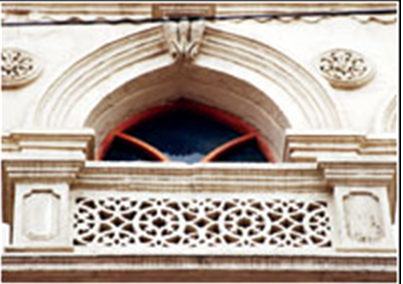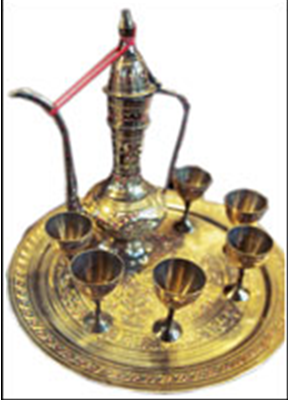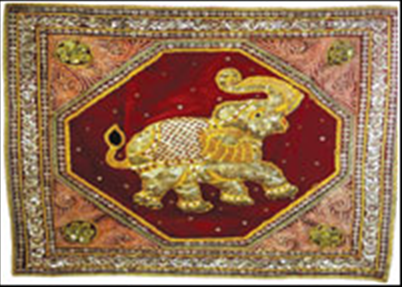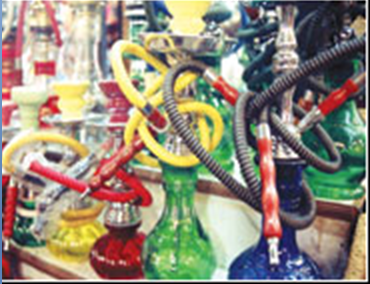Karachi: R-Z
This is a collection of articles archived for the excellence of their content. Readers will be able to edit existing articles and post new articles directly |
Karachi: Saddar Bazaar
Reclaiming Historic Saddar Reviewed by Joel Gordon
Amidst the cacophony of traffic, hawkers and bargain hunters engaged in wordplay, the sound and light show of high-tech electronics, the dust and debris, it is not easy to imagine the Saddar that once was the cultural, intellectual and entertainment center of Karachi. The old artful buildings that remain have fallen on hard times, crumbling from within, camouflaged by encroachments and sign boards, further hidden from view by rows of sidewalk and street vendors, fortune tellers and roving peddlers crowded together amidst kiosks, carts, portable and semi-permanent display stands.
The movie palaces and eateries, with rare exception are gone, replaced by tasteless structures built hastily, often two steps ahead of those city officials who would not wink at a cash payment in lieu of meeting municipal codes. The streets, jammed with quasi-legal public transport vehicles following improvised routes and private cars searching endlessly for parking, seem to scoff at the very idea that they once were stately thoroughfares.
There is life in Saddar, for sure. The area remains a bustling, hustling bazaar for the transaction of wholesale goods, imports and locally produced, bona fide and pirated merchandise.
If the area once, long ago, served Karachi’s western and modernised local elites, university students, filmgoers, gallery hoppers, and well-dressed diners, it has in recent decades remained a vital transaction zone for lower and middle-class shoppers seeking affordable clothes, videos and gaming systems, household goods and produce. If the past is indeed a ‘foreign country’, what might the future hold for Saddar?
The key to plotting a future that does not entail further spiraling downwards towards ever more urban rot, argue the authors of this provocative study, is to look beyond the contemporary façade and really understand the present. There is, naturally, an undertone of nostalgia for what has been lost. But these three architects-planners-professors recognise that a sharply focused magnifying glass will serve the future far more than rose-colored spectacles
There is life in Saddar, for sure. The area remains a bustling, hustling bazaar for the transaction of wholesale goods, imports and locally produced, bona fide and pirated merchandise.
Their statistics, maps, and proposals are based on a clear, dispassionate reading of the situation on the ground, underscored by the obvious time they have spent interviewing and talking to shoppers, shopkeepers, neighbourhood residents and — especially — the hawkers who are the heart of Saddar’s problems and the key to its ultimate rehabilitation.
In the hands of a streetwise journalist or urban social scientist we might hear the hawkers’ actual words, their litanies of grievances and bold opinions about the tenor of city life, politics and economics. But these hidden voices gain legitimacy in the authors’ analysis. The hawkers remind us that there is method to the madness of the streets, order behind the seeming chaos, and that they too are citizens with corporate interest in a functioning urban commercial sphere.
The hawkers demand to be heard. Their concerns are sound, their choices rational. Savvy to both informal economic structures and the workings of official bureaucracy, they reject and will undermine any solution that does not take their interests into account.
Having paid their bhatta to willing municipal officials and police, and arranged for storage of their wares with adjacent shop owners, they consider themselves legitimate, rightful renters of city property. Above all, they will brook neither relocation by force or rehabilitation schemes that do not take public transportation into account, either for their own access to their stalls and carts or, equally important, the access of their customers.
Hawkers unions actively seek the mediation of non-governmental organisations and emphasise the need for non-partisan groups to foster trust between formal and informal merchants, city officials, urban planners and police.
The authors have listened carefully and sketched their plans accordingly. Saddar, they recognise, cannot be rehabilitated overnight. A series of measured, realistic steps are required to reshape the area into a revitalised commercial center in which commerce may ensue, well-established businesses and longtime residents will no longer feel pressured to flee, and the degradation of Karachi’s architectural heritage can be stemmed.
First and foremost, they argue, street hawkers must be accepted as part of the commercial landscape, licensed and leased space fairly, positioned in locations that take their interests into account and allow for proper storage – all in dialogue with area residents and in an atmosphere of transparency.
The next steps are the creation of pedestrian zones, the regulation of parking for private vehicles, and the construction of formal terminals for the arrival and departure of public transport.
Such steps will be most effective, the authors assert, in a wider context of traffic re-routing and more regulated public transportation throughout the city, including rehabilitation and extension of the moribund Circular Railway.
Karachiites criss-cross the city regularly for work and shopping, but the physical and mental gridlock must be disentangled before anyone but the dreamers might consider a future in which an ever-flourishing, noisy Saddar may come full circle to touch at least a piece of its rich heritage.
The Hawkers of Saddar Bazaar By Arif Hasan, Asiya Sadiq Polak and Christophe Polak Ushba Publishing International, Karachi Available with Paramount Books, Karachi ISBN 969-8588-61 205pp. Rs550
Karachi: Zainab Market
HOME DÉCOR: Crafts and curios
Text by Moiz Kazmi and photographs by Arsalan
Zainab Market, a haven for cheap clothes, leather and fur clothing, also hosts some shops on the ground floor which stock exquisite, ornate and extremely popular items in handicrafts, regional crafts and collectibles. Just the very things you were looking for to do up your house.
Roll out the carpet:
Rugs, carpets, runners and centre pieces from Turkey, Afghanistan, Iran, Romania, India as well as interior Sindh and Punjab are among the main attractions at this shopper’s paradise, starting from Rs2500 for small rugs to about Rs18000 for full-sized ones.
Hand-woven carpets, with floral designs, Mughal motifs, butterflies, wild animals as well as with abstract designs, are on offer too.
Under cover:
There’s nothing like a nice bright set of cushion covers to add colour to a room and Zainab market offers a vast range of these.
From simple and complex geometric designs to floral patterns, highlighted with hand-stitched mirrors and zarri work, these cushion covers are truly a work of art. Mirror work adds a razzle-dazzle element to these covers while colourful patchwork, with both ethnic and modern patterns, adds life to any room. The cost ranges from Rs50 to Rs350, depending on the size, design, fabric and the embellishments.
Display your hang-ups!
The use of wall hangings dates back to the ancient Greeks and hand-woven tapestry art was believed to be a popular mode of decorating affluent homes and important buildings.
At Zainab Market, you can get your hands on all kinds of wall hangings, from fine oriental linen to opulent silk and wooden Rajasthani art. Quilted hangings, metallic wall art and Swati embroidery are all in vogue.
Magical lamps:
There are so many different types of lamps and lamp-shades that you may feel overwhelmed by the prospect of choosing a shade for a table, floor or ceiling lamp. From stained and frosted glass lamps to nutshell shades, metallic and wooden handmade lamps to digitally designed, abstract, curling, twirling, lamp shades, the choice is endless.
Both locals and foreign tourists flock the market for these handicraft items, particularly those made with camel skin which are a trademark handicraft of Bhawalpur.
All that wood
Wooden handicraft from Multan, Chiniot, Bhawalpur, Sargodha and interior Sindh is another popular item.
Oak, ash, maple, walnut and cedar wood are mostly used for sculpting these items that include vases, boxes, wall décor, tables, fruit baskets, bowl sets, figures of animals and birds. Jewellery boxes, dry fruit trays, dustbins and ashtrays are also available. Items with engraved designs and patterns are usually expensive. And for the last few years, woodcrafts from Thailand, Malaysia, China, Philippines, India and Bangladesh have also found their way here.
Go for bronze:
Bronze or brass is a high-grade copper-tin alloy. Statues, sculptures, ornaments, accessories and jewellery made from this metal are durable collectibles and last for ages with proper care and maintenance.
At Zainab Market you can find replicas of artefacts unearthed at Mohenjodaro, Pharaoh’s heads, Trojan horses, Buddha statues, elephants, tigers and bulls, as well as things such as paperweights, pen holders, ashtrays, candle stands, bowls and other tabletop accessories in bronze.
Marble and onyx:
When it comes to natural stone, marble, granite and onyx items are both cost-effective as well as attractive home décor options. Marble and onyx centre tables and wall clocks, fountains, miniatures of the Taj Mahal, Eiffel tower, Tower of Pisa, chess sets, ashtrays, vases, telephone stands and busts of Buddha and Greek gods in all sizes are sought-after by tourists and locals alike. For people with a taste for the ostentatious, hand-carved marble and onyx pieces, such as fireplaces, pillars and gazebos can be made to order at a heavy price.














